Cuando se trata de digitalizar bordados, lograr una calidad y precisión de puntada impecables es de suma importancia. One crucial aspect that ensures this level of precision is push and pull compensation. ;
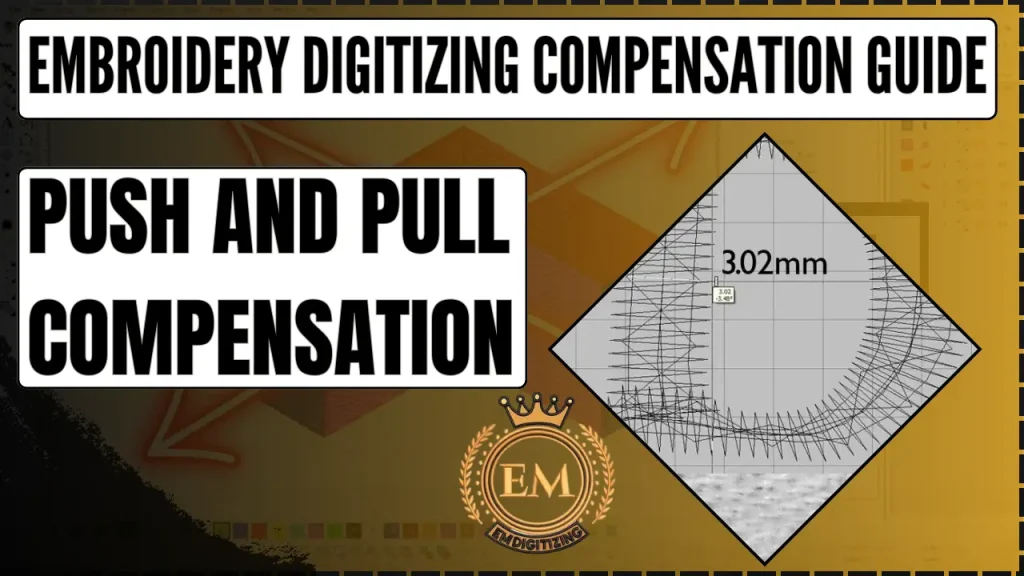
Comprender e implementar estas compensaciones puede mejorar en gran medida los resultados finales del bordado., produciendo limpio, diseños bien definidos.
En este articulo, profundizaremos en el significado de ellos en digitalización de bordados.
Guía de compensación de digitalización de bordados: Compensación de empujar y tirar
¿Qué es la compensación de empujar y tirar??
La digitalización del bordado es como un delicado baile entre la aguja y la tela.. Pero a veces, the fabric can’;No sigues el ritmo de tus movimientos suaves., causando arrugas antiestéticas, extensión, o desalineación. That’;Es donde entra en juego la compensación de empuje y tracción..
Se trata de asegurarse de que su diseño bordado permanezca en perfecta armonía con la tela..
It’;Es una técnica inteligente que ajusta la ubicación de las puntadas para adaptarse a cualquier movimiento de la tela durante el proceso de bordado..
Al hacerlo, Previene cualquier distorsión no deseada y garantiza un producto acabado de aspecto profesional..
Importancia de la compensación de empujar y tirar en la digitalización de bordados
Imagínese pasar horas digitalizando un diseño fabuloso, solo para que quede torcido o distorsionado en la tela.
No es genial, Correcto?
That’;Por eso la compensación de empujar y tirar es una parte vital del proceso de digitalización del bordado..
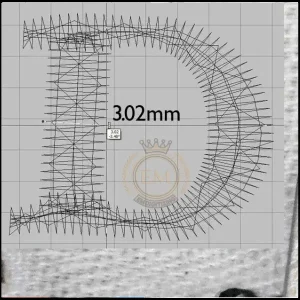
Incorporando técnicas de compensación de empujar y tirar., Puedes crear diseños que se mantengan fieles a la forma y el tamaño previstos., no matter the fabric’;comportamiento.
It’;Es el ingrediente secreto que te ayuda a mantener densidad de puntada, prevenir arrugas, y lograr líneas nítidas y limpias en tu trabajo de bordado. Considérelo su compañero de confianza para mantener sus diseños con un aspecto excelente..
Técnicas de compensación de empuje y tracción en la digitalización de bordados.
Explore las técnicas de compensación de empujar y tirar en la digitalización de bordados, esencial para lograr diseños impecables en cualquier tejido.
Estos métodos garantizan que su bordado se mantenga preciso y hermoso., regardless of the material’;s estiramiento o rigidez
Técnicas de compensación de empuje
Cuando la tela intenta desalinear su diseño, it’;Es hora de desarrollar algunas técnicas de compensación de empuje.. Los métodos comunes incluyen ajustar la dirección de la puntada y la densidad de la puntada en las áreas donde podría ocurrir movimiento de la tela..
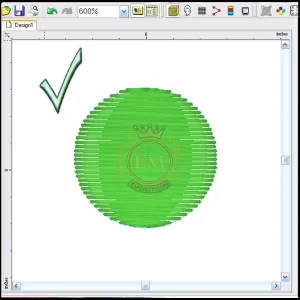
Empujando estratégicamente los puntos, Puedes contrarrestar cualquier distorsión no deseada y mantener la integridad de tu diseño..
Técnicas de compensación de tracción
Al igual que la compensación de empuje, pull compensation techniques help counteract the fabric’;s tendencias obstinadas. Cuando la tela tira o se estira, Puede perfeccionar su diseño digitalizado ajustando los ángulos de puntada o agregando puntadas adicionales para anclar el diseño en su lugar..
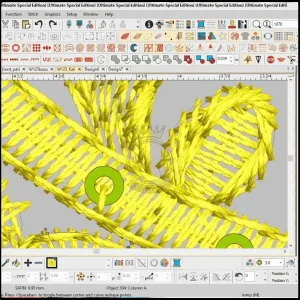
Piense en ello como una banda elástica digital., manteniendo todo bajo control y evitando cualquier estiramiento o desalineación no deseada.
Desafíos y soluciones comunes en compensación push y pull
Ahora, Explore los obstáculos y soluciones comunes en la gestión de la compensación de empuje y tracción en el bordado., asegurando que sus diseños se mantengan nítidos y alineados.
Cómo lidiar con la distorsión y la desalineación
La digitalización de bordados no es un paseo por el parque. Algunas veces, a pesar de nuestros mejores esfuerzos, la distorsión y la desalineación pueden asomar sus feas cabezas.
It’;Es como intentar pelear con una manada de gatos: puede ser un verdadero desafío..
Pero no temas, mi entusiasta del bordado!

Hay un par de soluciones para ayudarle a lidiar con este frustrante problema..
- Primero, asegúrese de que su diseño esté correctamente alineado y centrado dentro del aro de bordado. Cuanto más preciso sea el punto de partida, mayores posibilidades tendrás de evitar distorsiones.
- Además, considere usar estabilizadores livianos o agregar más capas de estabilizador para minimizar la distorsión.
- Y si todo lo demás falla, Respira hondo y recuerda que las imperfecciones pueden añadir carácter.. Acepta la torpeza!
Superar los problemas de tensión del hilo
ah, tensión del hilo issues –; una verdadera espina clavada en el costado de muchas bordadoras. It’;Es como tratar de encontrar el equilibrio perfecto entre estar demasiado suelto y demasiado apretado.. It’;es un arte delicado, mi amigo.
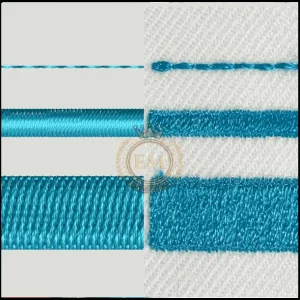
Considere usar un probador de tensión o ajustar la tensión del hilo superior manualmente hasta alcanzar ese punto óptimo..
And if you’;todavía estás teniendo problemas, don’;No tengas miedo de buscar nuestra ayuda.. There’;No es una vergüenza necesitar una mano amiga.! Simplemente contáctenos en nuestro sitio web, estamos aquí para ayudarte.
Mejores prácticas para lograr una compensación óptima de empuje y tracción
Descubra las mejores prácticas para una compensación perfecta de empujar y tirar para garantizar que su bordado luzca nítido y permanezca en su lugar..
Selección adecuada de tipos de puntadas.
ah, the world of stitch types –; un lugar donde la creatividad y la practicidad chocan. Cuando se trata de compensación de tira y afloja, elegir el tipo de puntada correcto puede marcar la diferencia.

Por otro lado, para áreas más grandes que requieren más estabilidad, Los puntos de relleno son el camino a seguir. Ofrecen mejor cobertura y soporte estructural..
Asi que, mi virtuoso del bordado, Tómese un momento para considerar el propósito y la complejidad de su diseño y elija sabiamente el tipo de puntada.. Tu diseño te lo agradecerá!
Ajustar la densidad y la base
Densidad y base: dos armas secretas en el mundo de la compensación de empujar y tirar. Estos poderosos elementos pueden ayudarlo a lograr el equilibrio perfecto entre lo demasiado flexible y lo demasiado rígido..
Al ajustar la densidad, Tenga en cuenta que las telas más pesadas pueden requerir una menor densidad para evitar un estiramiento y una distorsión excesivos.. Telas más ligeras, por otra parte, puede beneficiarse de una mayor densidad para garantizar una cobertura adecuada.
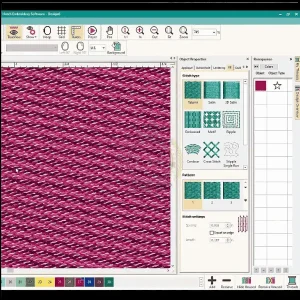
And let’;no lo olvidemos sobre la base, el héroe anónimo de la digitalización del bordado. Experimente con diferentes tipos y pesos de base para brindar el soporte necesario sin sobrecargar el diseño..
Beneficios de una compensación adecuada de empuje y tracción en la digitalización de bordados
La compensación adecuada de empujar y tirar puede parecer un tema aburrido, pero oh, las maravillas que puede hacer!
Déjame pintarte un cuadro vívido de los maravillosos beneficios que te esperan..
Primero y ante todo, Lograr una compensación óptima de empuje y tracción garantiza que su diseño conserve la forma y apariencia deseadas.. No more wonky letters or misshapen objects—just a beautifully executed embroidery piece that’;Seguro que llamará la atención.

Es más, La compensación adecuada mejora la durabilidad general de su bordado.. Previene el desgaste excesivo, asegurando que su obra maestra resista la prueba del tiempo.
Asi que, mientras que otros pueden tener que lidiar con hilos desenredados y diseños distorsionados, puedes disfrutar de la gloria de tu creación perfectamente compensada.
Pero espera, there’;es más!
Cuando su compensación de empujar y tirar es la adecuada, Tu bordado será más suave y de aspecto más profesional.. Tus amigos quedarán asombrados por tu atención al detalle y el impecable acabado de tu trabajo..
You’;Serás la estrella de rock bordada de tu círculo social.. Ahora, who wouldn’;No quiero eso?
Conclusión
En conclusión, La compensación de empujar y tirar en la digitalización de bordados puede parecer una tarea desalentadora., pero no temas, mis compañeros entusiastas de la costura.
Con un poco de practica, paciencia, y una pizca de creatividad, usted puede superar los desafíos comunes y lograr resultados óptimos.
Asi que, mis virtuosos del bordado, Avanza y conquista el mundo de la compensación push and pull.. Libera tu creatividad, puntada por puntada, y deja que tus obras maestras bordadas brillen con el equilibrio perfecto entre ingenio y precisión..
feliz costura!
EMdigitalización: Su experto en digitalización de bordados de referencia
Buscando ayuda con un proyecto de bordado?
La digitalización electrónica se erige como la principal opción. Nos especializamos en brindar digitalización de bordados de primer nivel y servicios de arte vectorial, todo entregado con tiempos de respuesta rápidos. Le invitamos a explorar nuestro sitio web y descubrir la gama de servicios que ofrecemos..
Como bienvenida especial a nuestros nuevos clientes., we’;Estamos emocionados de ofrecer una exclusiva 50% descuento en todos nuestros servicios. Además, proporcionamos cotizaciones gratis en solo 5 minutos, garantizando que pueda planificar su proyecto rápida y fácilmente.
Don’;No pierda esta fantástica oportunidad de mejorar su proyecto de bordado con la experiencia de EMdigitizing..
Si tiene alguna pregunta sobre nuestros servicios o esta oferta, no dude en comunicarse. Gracias por considerarnos para sus necesidades de bordado..
Preguntas frecuentes:
It’;s called “;compensation”; en diversos contextos de elaboración y costura porque implica hacer ajustes o correcciones para garantizar que un diseño o patrón se alinee, encaja correctamente, o compensa cualquier irregularidad en el proceso de costura.
La compensación de puntadas se refiere a la práctica de realizar ajustes menores en la ubicación o el tamaño de puntadas individuales en bordado o costura para tener en cuenta los cambios de diseño., variaciones de tela, o irregularidades, Asegurar que el resultado final se vea consistente y equilibrado..
“;Stitch”; se refiere a una sola unidad de costura o bordado, while “;stitches”; es la forma plural, indicar múltiples unidades de costura o bordado en un área o diseño determinado.
El principio de una puntada consiste en pasar una aguja enhebrada a través de una tela para crear un bucle o nudo seguro., que se puede repetir para formar varios patrones decorativos o costuras funcionales en costura y bordado.
En bordado, La compensación se refiere a la técnica de ajustar la ubicación o el tamaño de las puntadas para garantizar que un diseño se vea simétrico o se alinee correctamente cuando se cose en un lienzo con diferentes hilos o grosores de hilo.. This technique is used to maintain the design’;s integridad general.
